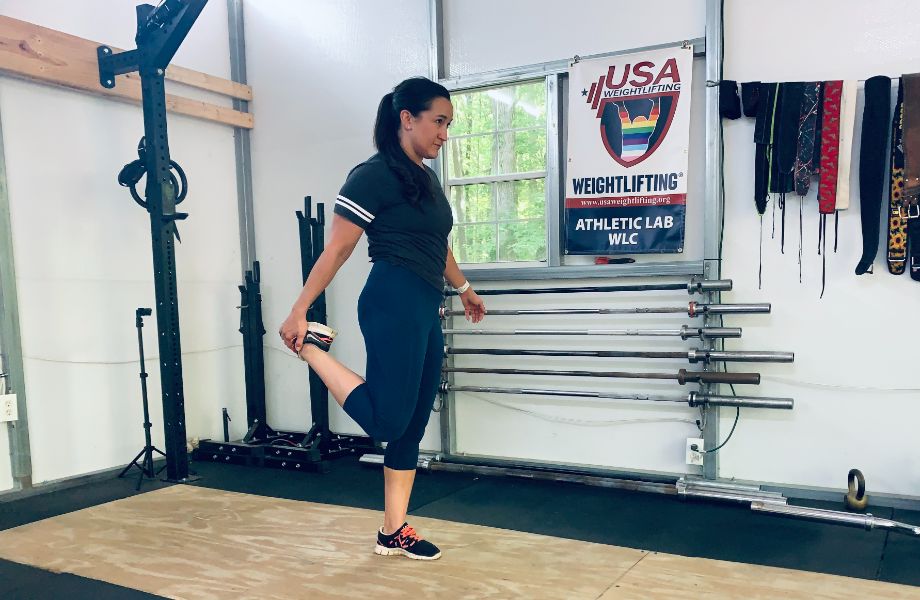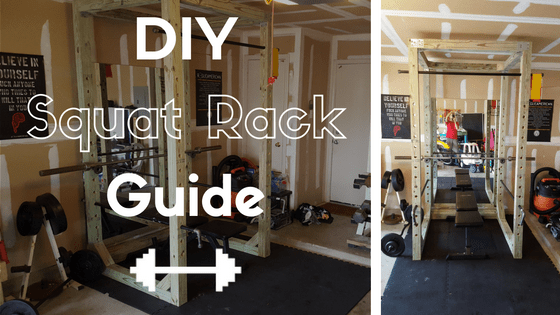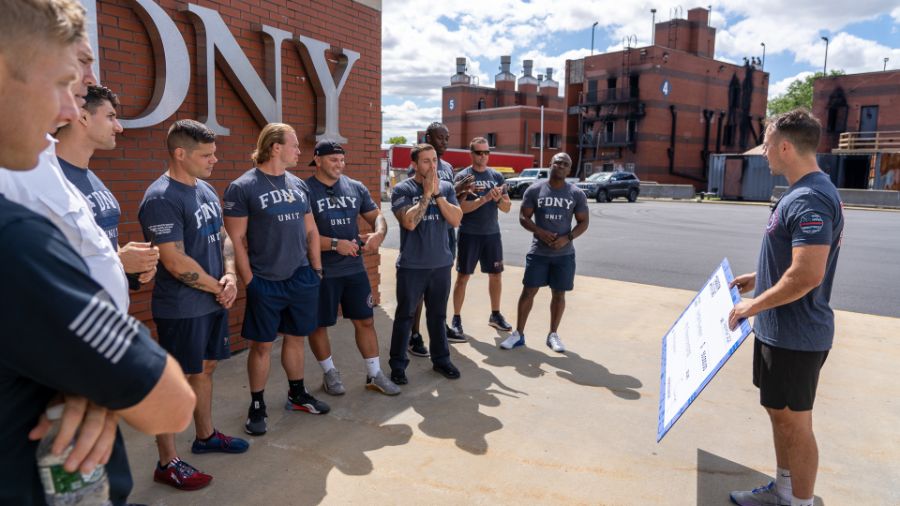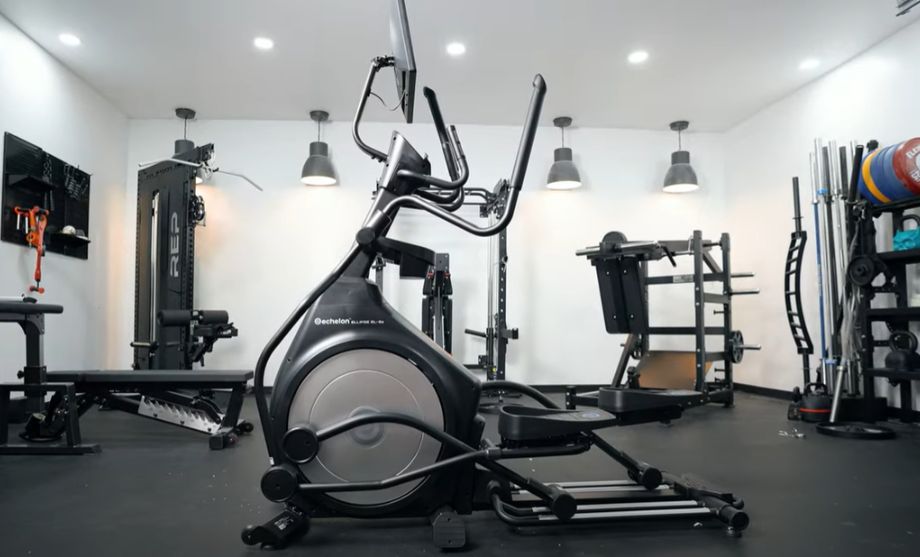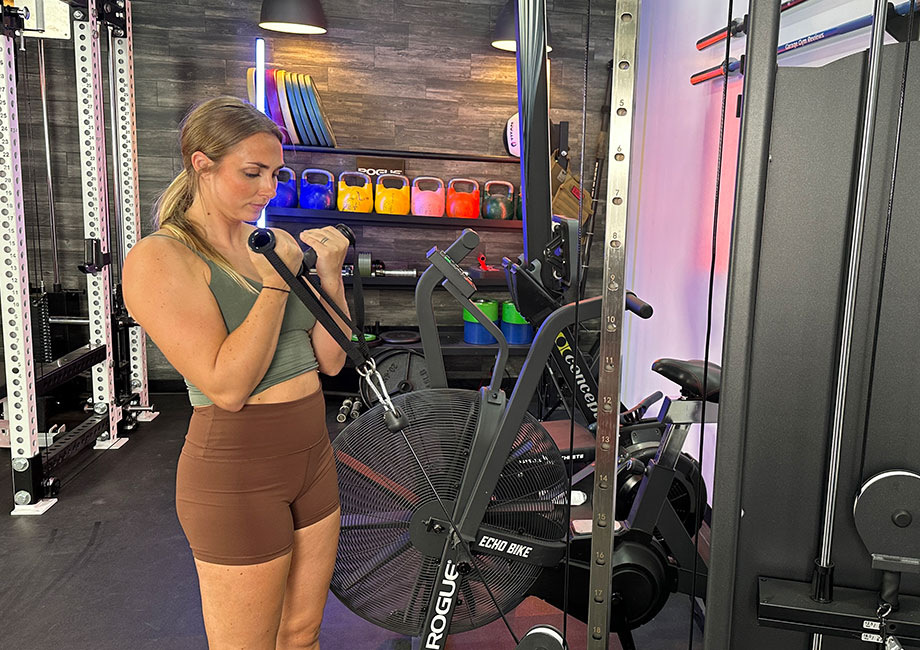Honestly, I rarely feel like stretching before a run. But, from years of experience, I regret every time I didn’t stretch before an intense run. I know that if I had taken a little time to stretch appropriately in advance, I likely would have been able to run harder or faster.
Studies show that stretching before you run can help improve your running economy (or how well you convert oxygen consumption into moving) and help you to run faster. Although many of us may have a stretching routine we have become accustomed to, the science out there may be a reason to reconsider how we stretch before we run.
I’m a personal trainer who happens to love doing cardio. Here, I want to share some great stretches before running you can do to better prepare your entire body for the intensity of a run.
Medical disclaimer: This article is intended for educational and informational purposes only. It is not a substitute for health or medical advice. For medical advice, contact an appropriate healthcare provider.
Why Stretch Before Running?
Jumping into anything unprepared usually leads to a worse outcome. This logic can easily be applied to your body when preparing for a high-intensity exercise, especially running.
The term “warm-up stretch” means exactly what it says. Proper warm-up stretches before running help elevate your body’s temperature and heart rate to reliably transition into your run. In addition, loosening up your muscles and joints and preparing them for their full range of motion will generate more blood flow that will help your body to use its energy efficiently, not desperately.
Studies show that stretching before you run can significantly benefit your running performance. However, it is essential to understand which specific type of pre-run stretches will actually help to accomplish this.
RELATED: The Best Gifts for Runners
Dynamic vs Static Stretching
Static stretching is likely what most of us are familiar with when it comes to stretching. Static stretches are stationary stretches where we push our muscles and joints to the furthest we can and hold for 30 seconds or so. Toe touches, the butterfly, or the standing quad stretch may be some of the most common that come to mind.
Dynamic stretching is where you practice a subtle and controlled pressure-building movement to help stimulate your muscles and joints’ range of motion. Additionally, dynamic stretches help to circulate your blood flow and elevate your heart rate (warm you up). Arm circles, leg swings, or walking lunges would be a few examples of great running warm-up movements.
While you may have your own opinion about the correct way to stretch before running, many scientific studies have concluded that dynamic stretching benefits your running economy and performance more than static stretching.
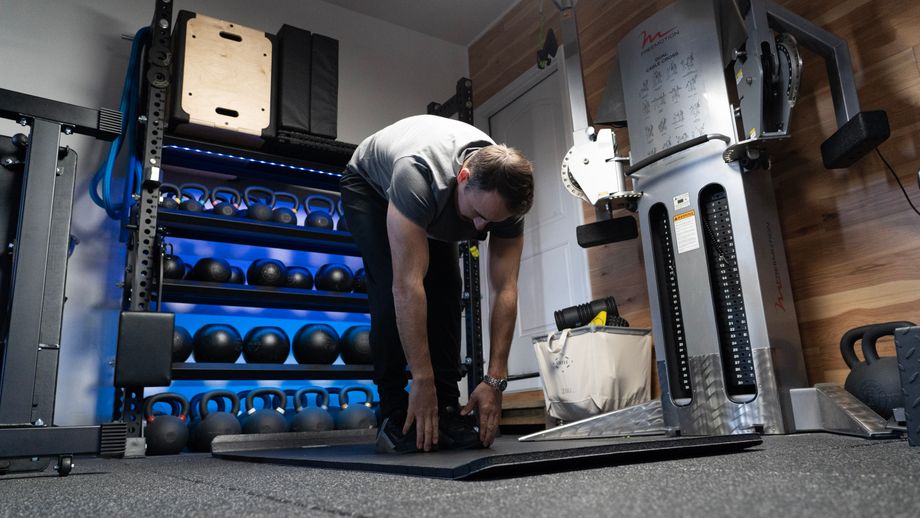
One study from the University of Genoa in Italy studied eight recreational runners training 15km a week (a little over nine miles). They found that static stretching may have had no impact or potentially disrupted running performance and economy. In comparison, dynamic stretching improved the runners’ performance, range of motion, and flexibility.
With dynamic stretching, we warm up our bodies through a fusion of movement and stretching. Dynamic stretching better prepares our body to transition into the intensity of a run by stretching our muscles and optimizing blood flow to our most affected muscle groups.
Static stretches are undoubtedly helpful for maintaining muscle and joint health when doing some exercises. They can also relax your muscles after a run. However, with regard to improving our running performance and reaping the benefits of running, science calls for our pre-run stretch routines to be dynamic!
6 Stretches to Do Before Running
I’ve compiled six stretching exercises you can do before running that many scientists and runners attest to being some of the best.
Front Leg Swing
Why Do It: There are three types of leg swings: front, back, and side to side. Leg swings help prepare our hips, quads, glutes, groin, adductors, inner and outer thighs, and hamstrings for the pressures of a run. Here, I’ll explain a front leg swing.
How to Do It:
- Begin by standing on your left foot, with your right foot slightly elevated and your leg extended somewhat in front of you. You can use the help of a nearby wall (fence, tree, etc.) for balance.
- Kick the elevated leg to a height where you feel safe pressure and a good stretch. I try to reach my adjacent hand.
- Bring your leg back down to its original slightly elevated position, then repeat and switch sides once completing your set.
- Swing for 30-seconds, or 10 to 15 swings on your right leg and left leg.
You can do leg swings also backward and laterally (side to side), following a similar logic to the front leg swing. However, bend your knee more when doing backward leg swings and expect to find a good stretch with less kick. Also notable, when doing lateral leg swings, your balancing foot should be positioned behind the leg you are swinging.
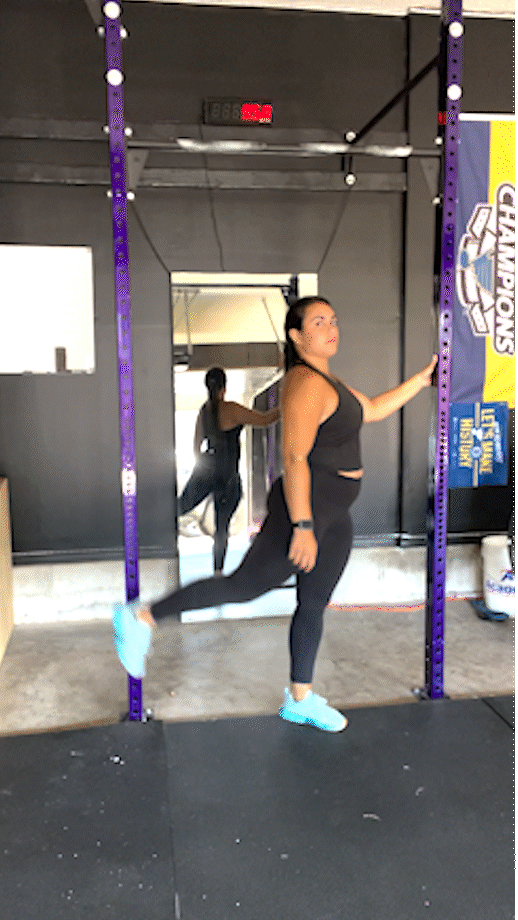
Arm Swings
Why Do It: Arm swings prepare the muscle groups and joints of the upper body. Arm swings help stretch and set your chest, upper back, and shoulders in motion. Also, being a low-intensity warm-up exercise, arm swings help get the blood flowing and prepare your body for its upcoming workout.
How to Do It:
- Stand or jog in place with your arms fully outstretched.
- Cross your right arm and left arm at the front until you feel a strong stretch, then promptly return to the outstretched starting position.
- Do three sets for 30 seconds at a time, or 10 to 20 swings.
When crossing your arms, you can pulse slightly back and forth where your elbows meet maximum tension for one or two seconds to feel the stretch better. Try to alternate your arms’ over and under positions using your right hand and left hand as guidance.
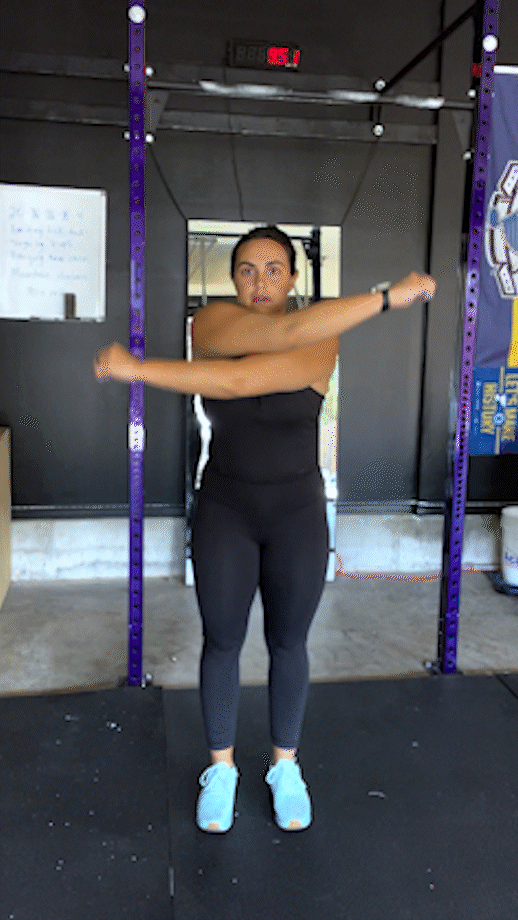
Arm Circles
Why Do It: Arm circles deliver a similar effect as arm swings. They help to warm up the upper body and give an excellent stretch to your shoulders, chest, and back. Arm swings also act as a low-intensity cardio warmup for your run.
How to Do It:
- Stand or jog in place and throw your left and right arm up and back in a circular motion. Imagine resembling a windmill on your body’s left and right sides.
- Reset to a standing or jogging position, and circle forward.
- Circle for 30 seconds, or do 10 to 20 circles.
In this motion, your upper body is moving your arms, so keep your arms relatively loose without losing composure. Despite targeting your general upper body, you will feel the most pressure on your shoulders. Be mindful if the pressure becomes too much, and reduce your circle size accordingly.
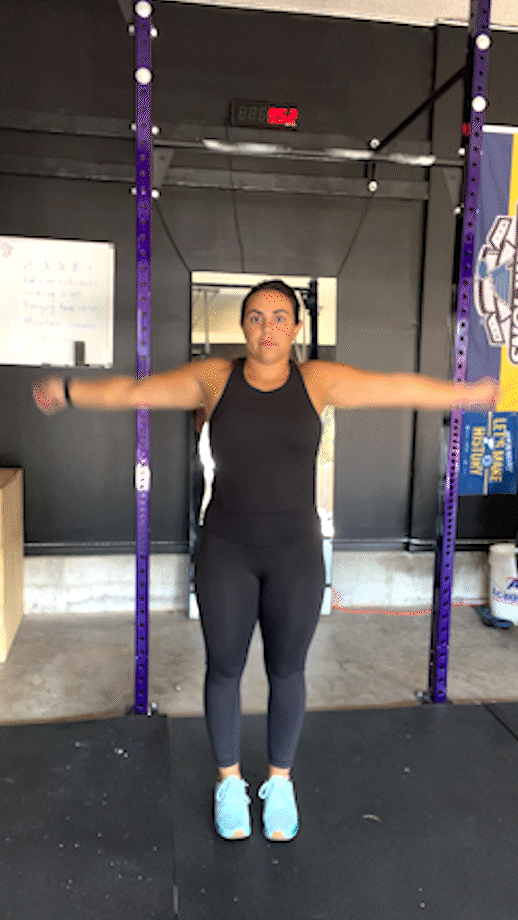
High Knees
Why Do It: High knees stimulate and stretch your calves, glutes, hips, and quads. Furthermore, they act as a low-intensity pre-run workout to get your blood flowing and elevate your heart rate to prepare yourself for your run. High knees can also be incorporated into high-intensity training if done with explosive force. This can build lower body muscle, activate your core, and build your cardio.
How to Do It:
- Start by calmly jogging in place.
- Lift your knees, alternating your left knee and right knee, aiming to bring them as high as possible. The goal is to get them to a 90-degree angle or above your waistline.
- Perform three 30-second rounds.
Make sure to maintain balance. Land on the balls of your feet for increased agility and to decrease pressure on your knees. Then, immediately bring your opposite knee up as the other returns to the floor. It’s best to imagine sprinting in place, so you can incorporate your arms to help the motion be more explosive.
However, if you struggle to bring your knees above your waist, some people tap or clap their knees with their hands to help meet a target while maintaining rhythm. Don’t forget to keep your focus, ensuring you maintain balance and a nice stationary running technique to prevent the risk of injury or stress on your lower back.
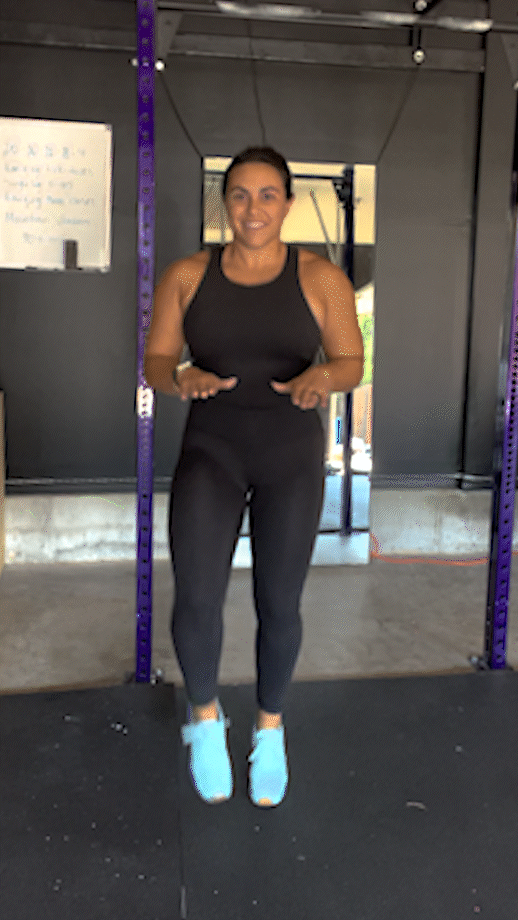
Butt Kicks
Why Do It: Butt kicks activate your quads and hamstrings. Furthermore, butt kicks act as a low-intensity cardio warm-up that boosts your heart rate and stimulates blood flow, enabling your body to more easily transition into the intensity of your run.
How to Do It:
- Start by calmly jogging in place.
- While maintaining a fluid jogging rhythm and balance, bring one heel as close as possible to your butt cheek (if you can’t reach your cheek, some people will place their outer palms between their butt cheek to meet the heel).
- Alternate back and forth at a warm-up pace.
- Perform three 30-second rounds.
It may help you to imagine reversing the high-knee dynamic stretch exercise. Similarly to high knees, keep your balance and technique to prevent stress on your lower back and knees, and not fall over!
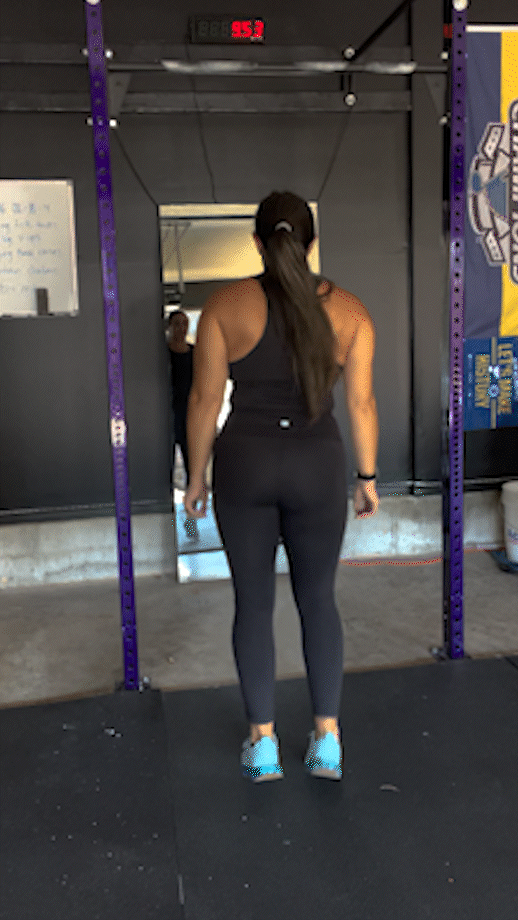
Standing Calf Raises
Why Do It: Standing calf raises stimulate your calf muscles to prepare them for the stress of a run. Here we propose gentle calf raises. However, this calf stretch exercise can also be a muscle-building exercise for your calves. You can incorporate the motion into wall sits or include weights while standing to increase the pressure.
How to Do It:
- Stand up straight with your feet roughly shoulder-width apart.
- Bring yourself up on your toes, elevating your heels into the air.
- Fully extend your foot on the balls of your feet to feel a stretch or pressure, then slowly bring yourself back down without allowing your heels to touch the floor.
- Do three 30-second rounds or sets of 15 to 30 raises.
This is best done on a ledge of some kind (sidewalk, or aerobic step, for example). However, a flat surface will work. If you struggle with the balance or pressure of the stretch, you can bring your heels to the floor on each rep.
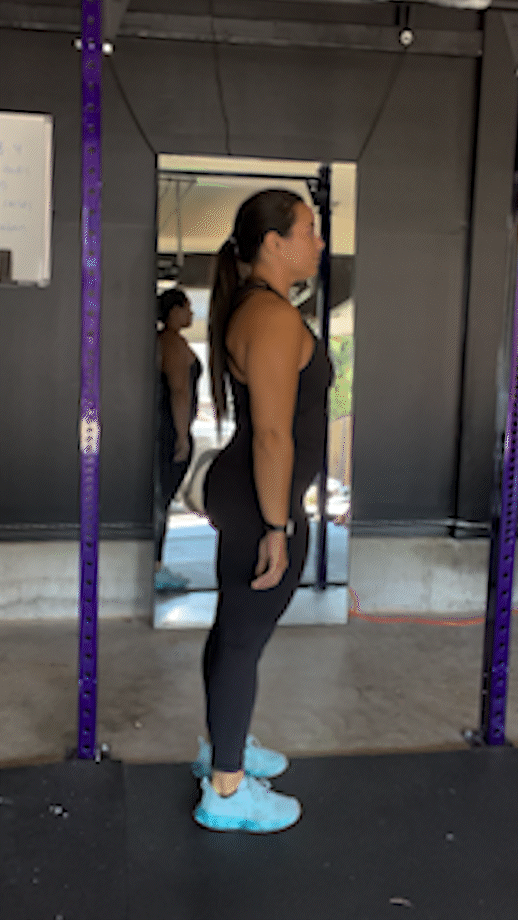
Stretches After Running
Like pre-run stretches, you should prepare your body to return to its regular heart rate and blood flow with a post-run stretch and cool-down period.
When finishing your running workout, reduce your speed and transition your body back to a calm jogging pace. Suddenly stopping can disrupt healthy blood flow and circulation. Cooling down or transitioning out of your intense pace will help your body ease into a healthy and calculated blood flow that may prevent muscle stiffness and soreness.
Stretching also plays a role in regulating proper blood flow and muscle adjustment by increasing circulation. Furthermore, stretching after a run may help to ensure your muscle groups remain limber and do not contract or stiffen.
Some of our favorite post-run stretches include:
- Calf stretch
- Quad stretch
- Groin stretch
- Hamstring stretch
- IT band stretch
- Figure four
Check out our guide to post-run stretching for more on these.
FAQs About Stretches Before Running
What are the best stretches before running?
Active movement stretches that help your body’s muscle groups and joints reach their maximal range of motion are the best to do before running. This type of stretching is also called dynamic stretching.
Dynamic warm-up stretches loosen and prepare your muscles and joints for the pressure of a run. While simultaneously increasing your blood flow and heart rate to be better prepared for and ease into the intensity of a run.
We like these stretches before you run:
– Front leg swings
– Arm swings
– Arm circles
– High knees
– Butt kicks
– Standing calf raises
Are you supposed to stretch before you run?
Yes! I suggest you stretch before you run. Preparing your body for the pressure and impact of a run may prevent soreness, inflammation, and stiffness. Furthermore, proper dynamic stretches help improve your running performance and economy.
How much should you stretch before you run?
I suggest stretching and warming up for 10 minutes before running. But, of course, if you are short on time, you may need to adjust this. Notably, some studies have determined that the efficiency of dynamic stretching can help save time in your pre-run stretch routine while still contributing to your overall performance.
Without using a precise time, an excellent way to determine a good pre-run stretch routine may be to identify the most affected muscles and joints by your run (shoulders, back, hips, hamstrings, glutes, calves, etc.). Then, judge the quality of your pre-run stretch by deciding if your routine sufficiently stretches out and activates these areas most affected on your upper and lower body by running.


